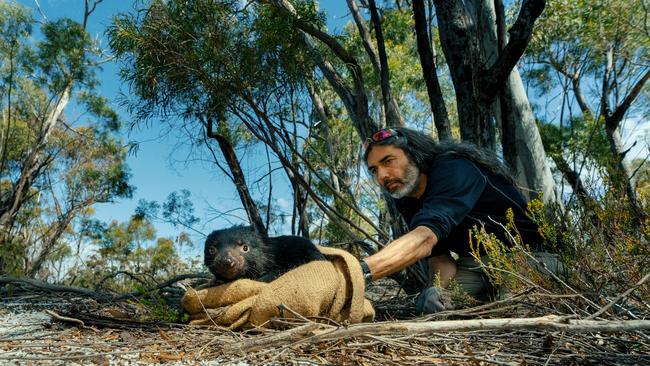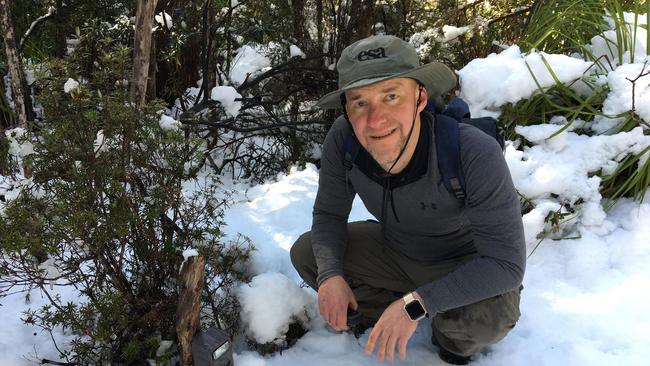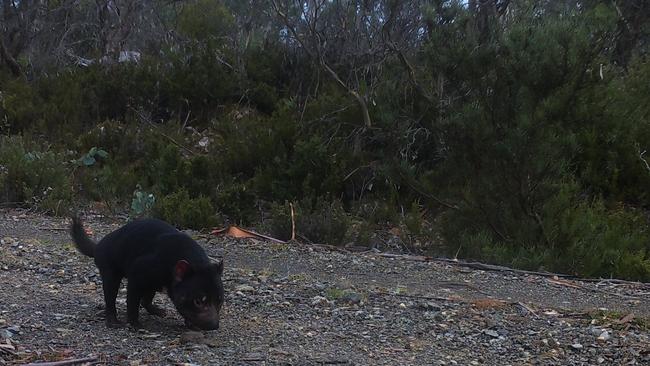New UTAS AI program to tackle devil facial tumour disease spread
UTAS researchers are harnessing new AI technology to scan through wildlife camera footage to monitor the spread of facial tumour disease. Watch the devilish footage.

Tasmania
Don't miss out on the headlines from Tasmania. Followed categories will be added to My News.
AI may be a hotly debated topic, but the new technology is helping scientists tackle the spread of the devastating Devil Facial Tumour 2 (DFT2) in southern Tasmania.
A new project from the University of Tasmania’s (UTAS) Dr Rodrigo Hamede and Professor Barry Brook combines vision from remote wildlife cameras and AI software to process and identify species and diseased individuals.
Dr Hamede, a disease ecologist, said the AI software will enable researchers to monitor Devil Facial Tumour Disease’s (DFTD) spread much faster and accurately than human labelling.

“This program will save a lot of time, energy and funding to obtain data on species when we would previously have to trawl through data from the wildlife cameras,” he said.
“The AI program can be trained to pick up and categorise devils based on whether they have DFTD or are healthy, whether they are pregnant, have mange, whatever we want to find out about the populations.
“We will have the necessary data at our fingertips to manage the spread of DFTD and the newer DFT2.”
DFT2 is the second transmissible cancer affecting Tasmanian devils and was discovered in 2014 near Cygnet on the D’Entrecasteaux Peninsula in the state’s south.

In 2022, the disease was detected outside the peninsula for the first time, showing DFT2’s rapid spread and increasing the need for even quicker research.
“We now the disease is spreading, but because we can’t find the data quickly enough on where sick devils are located or where the populations move to, we can’t trap or test these animals,” Dr Hamede said.
“We have already been studying in the Channel area, but know that the disease is spreading, so we need to be ready to move with it.”
The mastermind of the AI programming Professor Barry Brook said it is a matter of feeding all of the readily available wildlife camera footage into the software.

“The way AI works is like training a child to read,” he said.
“We supply the program with thousands of hours of footage, showing it examples of devils with FTD, and it begins to pick up on that in our footage and categorise it for us.
“We already have AI reading X-rays for us around the world, why not wildlife camera footage?”
Beyond the Tasmanian devil, the programming can also be used to track other species and relevant conditions based upon available data from wildlife cameras, Professor Brooks said.
Now it’s in the hands of regular citizen scientists in the Huon and Derwent Valley to assist with battling DFT by allowing wildlife cameras to be deployed on their property.

“The more people sign up for our project, the better we can monitor DFT2 spread and
Effects,” Professor Brooks said.
“Their participation provides valuable data, raises awareness, and fosters a collective effort to combat DFT2.”
Dr Hamede said it’s important the public realise their “vital” role in saving the Tasmanian devil.
“People are part of our research and conservation of the devil,” he said.
“It’s only from the public’s assistance in offering their land and camera footage that we have been able to research DFTD so far.”
To join the fight to save the Tasmanian devil, landowners in the Huon Valley and
Derwent Valley are encouraged to sign up at tasmanian.devil.surveys@utas.edu.au
Originally published as New UTAS AI program to tackle devil facial tumour disease spread



